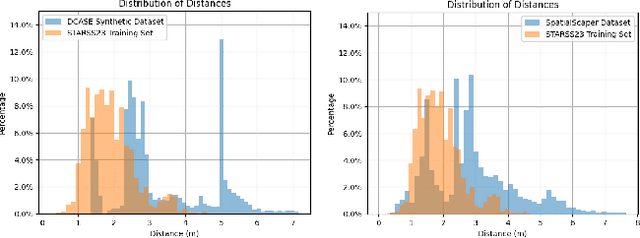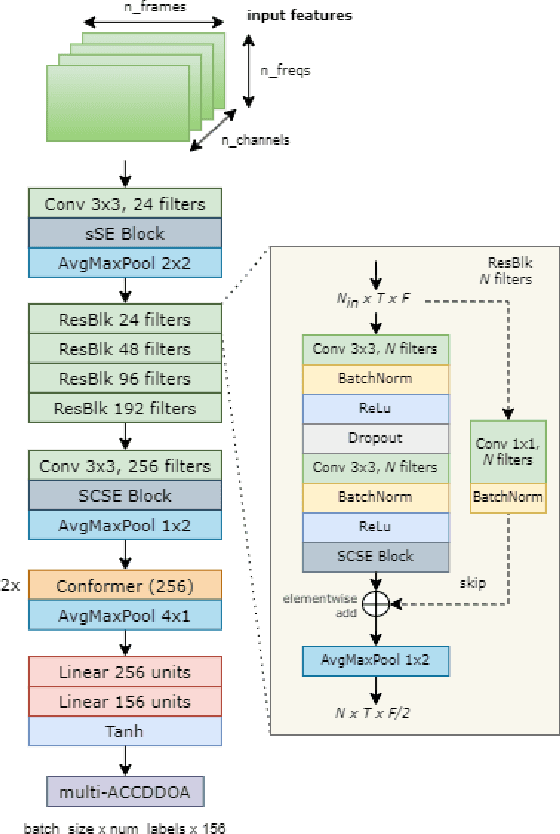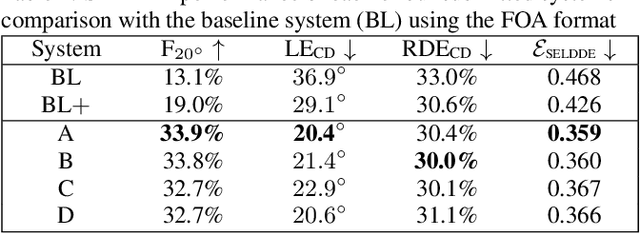Jun Wei Yeow
Real-Time Sound Event Localization and Detection: Deployment Challenges on Edge Devices
Sep 18, 2024Abstract:Sound event localization and detection (SELD) is critical for various real-world applications, including smart monitoring and Internet of Things (IoT) systems. Although deep neural networks (DNNs) represent the state-of-the-art approach for SELD, their significant computational complexity and model sizes present challenges for deployment on resource-constrained edge devices, especially under real-time conditions. Despite the growing need for real-time SELD, research in this area remains limited. In this paper, we investigate the unique challenges of deploying SELD systems for real-world, real-time applications by performing extensive experiments on a commercially available Raspberry Pi 3 edge device. Our findings reveal two critical, often overlooked considerations: the high computational cost of feature extraction and the performance degradation associated with low-latency, real-time inference. This paper provides valuable insights and considerations for future work toward developing more efficient and robust real-time SELD systems
Squeeze-and-Excite ResNet-Conformers for Sound Event Localization, Detection, and Distance Estimation for DCASE 2024 Challenge
Jul 12, 2024



Abstract:This technical report details our systems submitted for Task 3 of the DCASE 2024 Challenge: Audio and Audiovisual Sound Event Localization and Detection (SELD) with Source Distance Estimation (SDE). We address only the audio-only SELD with SDE (SELDDE) task in this report. We propose to improve the existing ResNet-Conformer architectures with Squeeze-and-Excitation blocks in order to introduce additional forms of channel- and spatial-wise attention. In order to improve SELD performance, we also utilize the Spatial Cue-Augmented Log-Spectrogram (SALSA) features over the commonly used log-mel spectra features for polyphonic SELD. We complement the existing Sony-TAu Realistic Spatial Soundscapes 2023 (STARSS23) dataset with the audio channel swapping technique and synthesize additional data using the SpatialScaper generator. We also perform distance scaling in order to prevent large distance errors from contributing more towards the loss function. Finally, we evaluate our approach on the evaluation subset of the STARSS23 dataset.
 Add to Chrome
Add to Chrome Add to Firefox
Add to Firefox Add to Edge
Add to Edge